Rust stains on bathroom tiles can be both unsightly and stubborn to remove. They often form when iron in water or metal fixtures reacts with moisture, leaving behind orange or reddish marks. While these stains may seem permanent, there are effective methods to eliminate them and restore your tiles to their original condition. This guide will walk you through how to remove rust from bathroom tiles safely and efficiently.
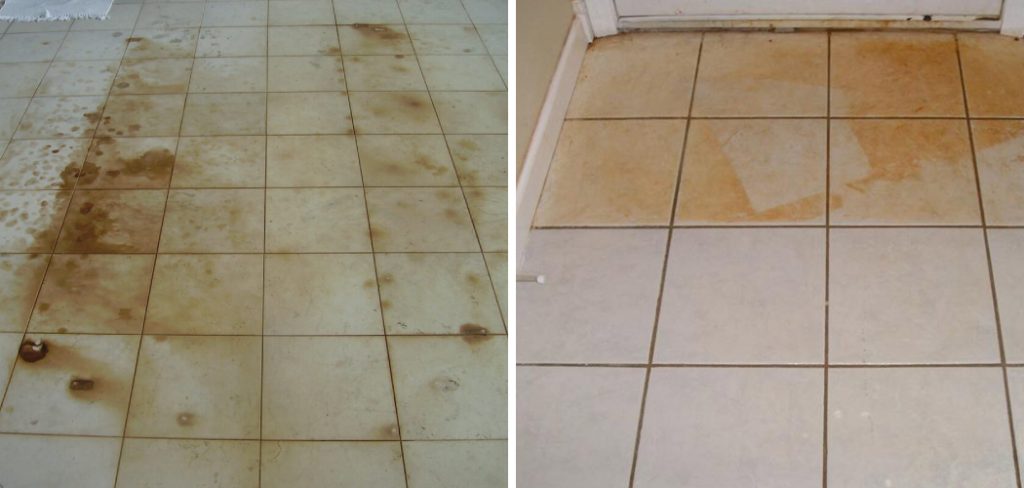
Importance of Maintaining Clean and Rust-Free Bathroom Tiles
Keeping your bathroom tiles clean and rust-free is essential not just for aesthetic reasons but also for maintaining hygiene and extending the lifespan of your tiles. Rust stains can damage the surface of tiles over time, leading to discoloration and potential weakening of the material. A clean bathroom contributes to a healthier environment by preventing the growth of mold, bacteria, and other harmful organisms that often thrive in humid conditions.
Additionally, well-maintained tiles enhance the overall appearance of your bathroom, creating a more relaxing and inviting space. Regular care and attention can save you from costly repairs or replacements in the long run, making it a worthwhile investment in your home.
Tools and Materials Needed
Before you begin removing rust stains from your bathroom tiles, gather the following tools and materials to ensure a smooth and effective cleaning process:
- White vinegar or lemon juice (natural acidic cleaners)
- Baking soda (for added cleaning power)
- A soft-bristle brush or old toothbrush (to scrub gently without damaging tiles)
- Rubber gloves (to protect your hands from cleaning agents)
- A clean sponge or cloth (for applying and wiping solutions)
- Commercial rust remover (optional, for persistent stains)
- Bucket of warm water (for rinsing)
Having these items ready will help make the cleaning process quicker, easier, and more effective.
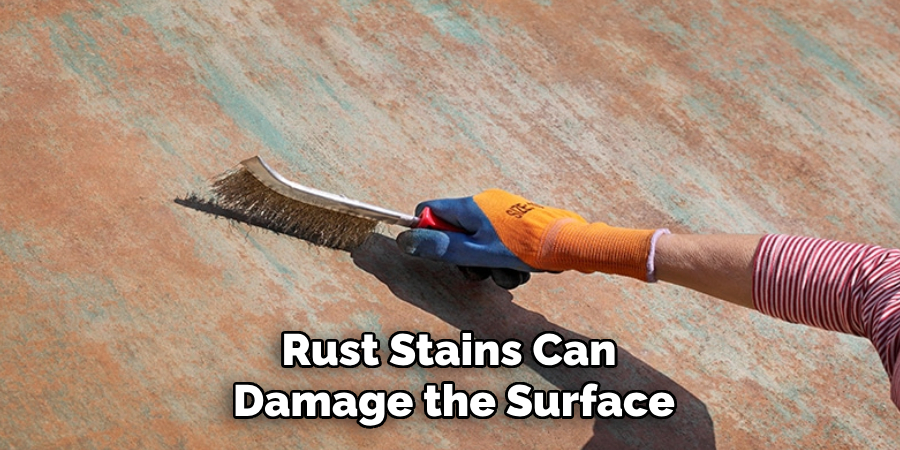
10 Methods How to Remove Rust from Bathroom Tiles
1. Use White Vinegar and Baking Soda Paste
One of the most effective and natural methods for rust removal involves a mixture of white vinegar and baking soda. Create a paste by combining equal parts of vinegar and baking soda until you achieve a thick consistency. Apply the paste generously to the rust-stained areas of the tiles. Let it sit for 15–20 minutes to allow the acidic properties of vinegar and the abrasive texture of baking soda to break down the rust.
Gently scrub the area with a soft brush or sponge, rinse thoroughly with warm water, and repeat if necessary.
2. Apply Lemon Juice and Salt
Lemon juice and salt are a powerful combination for tackling rust stains due to their natural acidity and abrasive qualities. Sprinkle salt over the rust-stained tile and squeeze fresh lemon juice on top until the salt is fully saturated. Let the mixture sit for 2–3 hours to dissolve the rust. Scrub the area with a soft-bristled brush or sponge, then rinse with warm water. This method not only removes rust but also leaves a fresh citrus scent in your bathroom.
3. Try Commercial Rust Removers
For stubborn rust stains that natural remedies cannot handle, consider using a commercial rust remover specifically designed for tile surfaces. Follow the manufacturer’s instructions carefully, as some products may require diluting. Apply the rust remover to the stained area, let it sit for the recommended time, and then scrub gently with a brush or sponge. Ensure the area is well-ventilated while using chemical cleaners, and wear gloves to protect your hands.
4. Use Hydrogen Peroxide and Cream of Tartar
Hydrogen peroxide, combined with cream of tartar, creates a potent rust-removal paste. Mix the two ingredients to form a paste and apply it to the rust stains. Allow the mixture to sit for 10–15 minutes before scrubbing the area with a soft brush. Hydrogen peroxide helps dissolve the rust while cream of tartar provides a mild abrasive action. Rinse the area thoroughly with water and repeat if necessary.
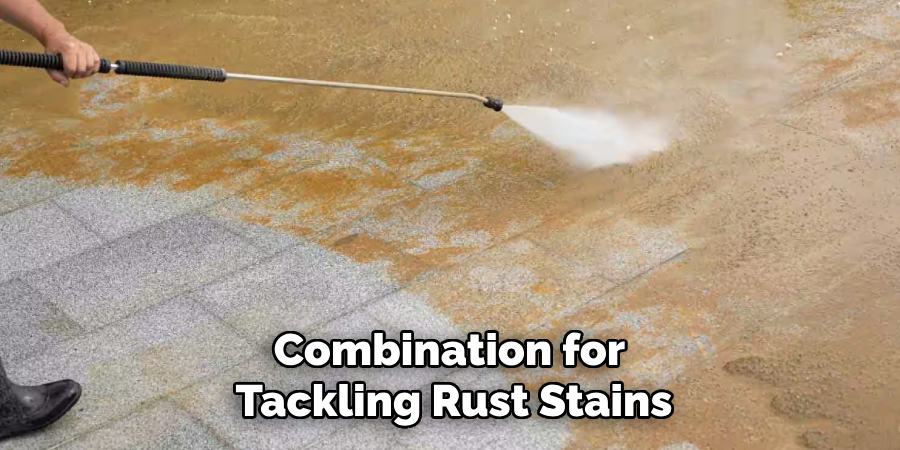
5. Scrub with a Pumice Stone
A pumice stone is an effective tool for removing rust from tiles without causing scratches. Wet the pumice stone and the rust-stained area before gently scrubbing in a circular motion. The abrasive nature of the pumice stone helps lift rust stains while being safe for most tile surfaces. Regularly rinse the stone and the area to avoid spreading debris. This method is especially effective for porcelain or ceramic tiles.
6. Make Use of Oxalic Acid
Oxalic acid, found in many rust removal products, is a strong agent for dissolving rust stains. Mix a small amount of oxalic acid with water to create a paste, or use a ready-made solution. Apply the acid to the rust-stained tile and let it sit for 5–10 minutes. Scrub gently with a brush, then rinse thoroughly with water. Be sure to wear protective gloves and work in a well-ventilated area when handling oxalic acid.
7. Apply a Toothpaste and Baking Soda Blend
A combination of toothpaste and baking soda can be a surprisingly effective remedy for minor rust stains. Mix equal parts toothpaste and baking soda into a thick paste. Spread the mixture onto the rust stains and let it sit for about 15 minutes. Use a toothbrush or soft-bristled brush to scrub the area gently, then rinse with warm water. This method is particularly useful for light stains and routine maintenance.
8. Use WD-40 Spray
WD-40, commonly used as a lubricant, is also effective for removing rust stains. Spray a small amount of WD-40 directly onto the rust-stained area and let it sit for a few minutes. Use a soft cloth or sponge to scrub the area in a circular motion. Rinse the surface thoroughly with warm water to remove any residue. This method works well for stubborn stains and leaves your tiles looking refreshed.
9. Experiment with Cola Beverages
Cola beverages, surprisingly, contain mild acids such as phosphoric acid, which can help dissolve rust stains. Pour a small amount of cola onto the rust stain and let it sit for 10–15 minutes. Scrub the area with a sponge or brush, then rinse thoroughly with water. While this method is unconventional, it can be effective for small, superficial rust stains.
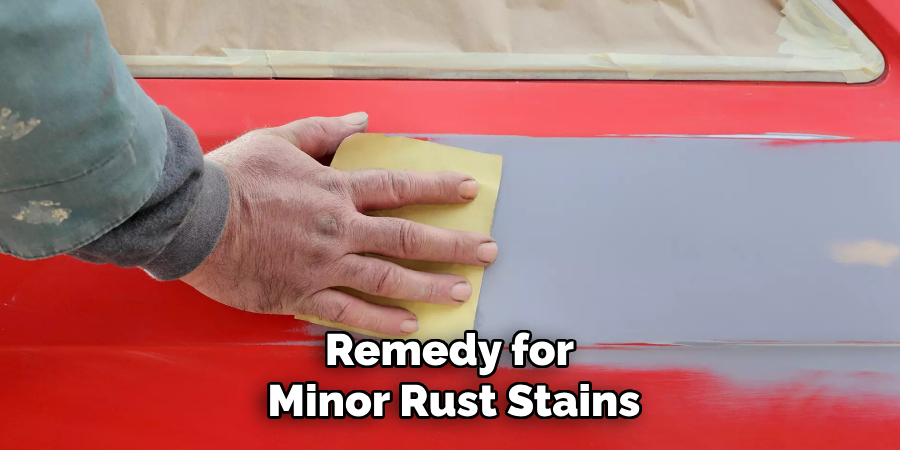
10. Prevent Rust Formation with Regular Maintenance
Preventing rust stains is often easier than removing them. Regularly clean your bathroom tiles to remove any mineral deposits or residue that can lead to rust. Avoid leaving metal objects, such as shaving cream cans or razors, on wet surfaces, as they can cause rust to form. If you live in an area with hard water, consider using a water softener to reduce mineral buildup. Additionally, wiping down tiles after each use helps prevent rust and keeps your bathroom looking spotless.
Maintenance and Upkeep
Proper maintenance and upkeep of your bathroom tiles can significantly extend their lifespan and maintain their pristine appearance. Start by establishing a regular cleaning routine using mild, non-abrasive cleaners to prevent the buildup of grime and mineral deposits. Always ensure the tiles are thoroughly dried after cleaning to avoid water spots.
Inspect your tiles frequently for signs of rust or discoloration, as early detection makes removal easier and prevents further spreading. Seal grout lines regularly to protect against moisture penetration and stains. For homes with hard water, installing a water softener can reduce mineral deposits that often lead to rust stains.
When to Contact a Professional
While many rust removal and tile maintenance tasks can be tackled with DIY methods, some situations may require the assistance of a professional. If rust stains persist despite repeated cleaning attempts or worsen over time, it’s a sign that deeper issues, such as underlying plumbing leaks or severe mineral buildup, may be present. A professional can assess the root cause and provide a more permanent solution.
Additionally, if your tiles are damaged, cracked, or discolored beyond cleaning, a professional may be necessary to repair or replace them. Excessive rust and corrosion in metal fixtures or pipes may also call for expert attention to prevent further damage. Hiring a professional ensures that the problem is addressed thoroughly and minimizes the risk of recurrence, preserving the long-term integrity and appearance of your bathroom tiles.
Safety Considerations
When dealing with rust removal and tile maintenance, it is important to prioritize safety to protect yourself and your home. Always wear protective gear, such as gloves and safety goggles, especially when handling strong chemicals like oxalic acid or commercial rust removers. These substances can be harsh on the skin and eyes, so working in a well-ventilated area is essential to avoid inhaling harmful fumes.
If you’re using abrasive tools like pumice stones or wire brushes, exercise caution to prevent scratching delicate tile surfaces. Additionally, be mindful of the cleaning solutions you use, as some products may be unsuitable for particular types of tiles. Always read product labels and perform a spot test on a small, inconspicuous area to ensure compatibility.
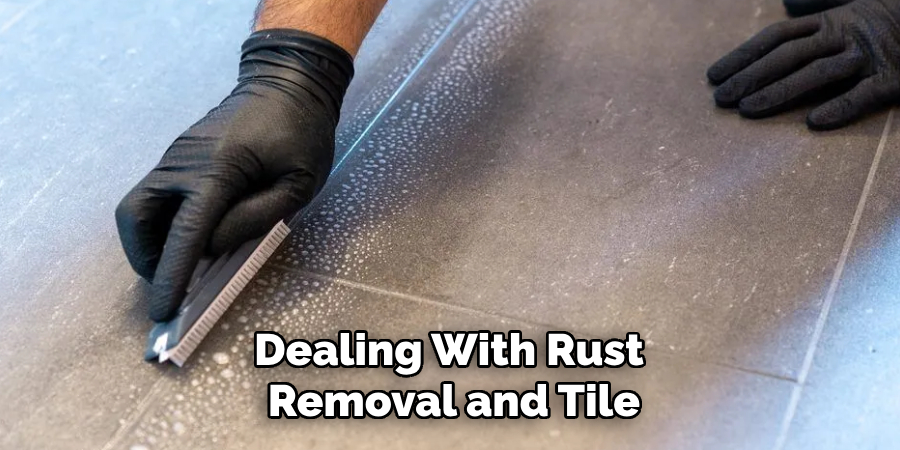
Conclusion
Rust stains on bathroom tiles can be a nuisance, but with the right methods and tools, they are entirely manageable. From natural solutions like lemon juice and baking soda to commercial rust removers and preventive measures, there are various approaches to suit different levels of rust buildup. Thanks for reading, and we hope this has given you some inspiration on how to remove rust from bathroom tiles!

